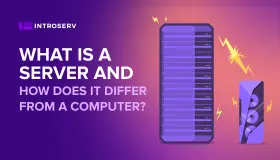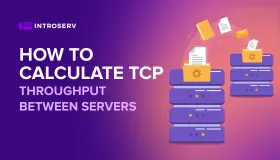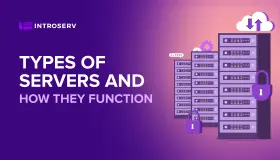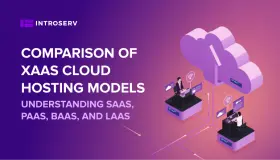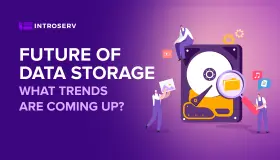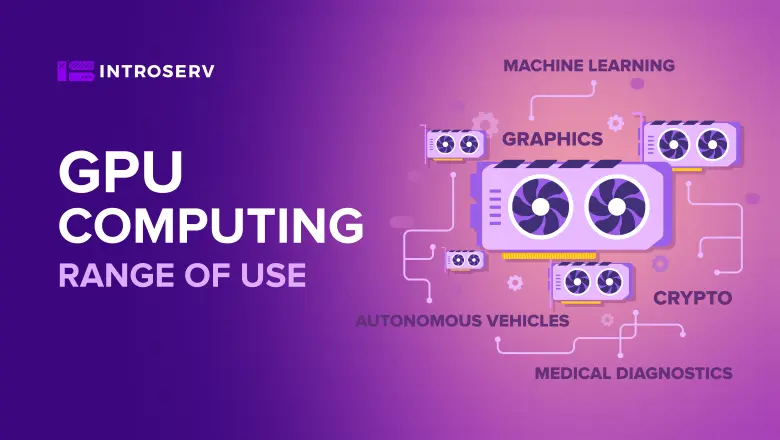
GPU Computing: Range of Use
Hey there, and welcome to our latest article on GPU computing. We are thrilled to share with you some profound insights into this cutting-edge technology that has completely changed modern computing.
So what is GPU computing? In simple terms, it refers to the use of graphics processing units (GPUs) to perform non-graphics-related computations. These units were originally developed as specialized processors for graphics rendering and gaming, but they have since been adapted to cater to a wide range of general-purpose computing tasks.
We'll take a closer look at the history of graphics card computing, its potential to replace CPUs, and the role of visual processing units in cloud computing, gaming, and programming. We will also be exploring the diverse range of applications for Graphics-based calculation, from artificial intelligence and machine learning to scientific simulations and medical imaging.
But before we proceed any further, let's define some key terms. A GPU is a specialized microprocessor designed to quickly manipulate and alter memory in order to expedite the creation of images in a frame buffer intended for output to a display. CUDA (Compute Unified Device Architecture) is a parallel computing platform and application programming interface (API) model developed by NVIDIA for general-purpose computing on video processing units.
So, what makes graphics-based acceleration such a critical component of modern computing? The answer lies in their ability to process data in parallel, resulting in faster and more efficient computation than traditional central processing units. This has paved the way for a wide range of applications for graphics processing units, such as improving gaming performance, accelerating scientific simulations, and enhancing machine learning algorithms.
Now, let's explore the realm of GPU-powered computation and all its potential applications.
GPU Computing: A Brief History
The history of video processors dates back to the early days of gaming and graphics when specialized chips were developed to handle the demands of rendering complex images and video. As gaming and multimedia applications grew more sophisticated, the need for faster and more powerful graphics processors became increasingly apparent.
Fast forward to the late 1990s when general-purpose computing appeared on graphics cards (GPGPU), but it wasn't until the early 2000s that the practical implementation and widespread use of graphics-based acceleration in the industry truly took off. This was thanks to the release of NVIDIA's CUDA programming language in 2006 and AMD's Stream SDK in 2007, which marked a pivotal turning point in GPU development. These advancements allowed programmers to harness the parallel processing power of video cards for complex calculations and simulations that were previously only possible on CPUs.
Since then, the evolution of GPU architecture and parallel processing techniques has continued at an exponential rate, with each new generation of visual processing units offering more powerful and efficient performance. And today, the applications for GPUs are virtually limitless, ranging from gaming and entertainment to scientific research and artificial intelligence.
Some of the most well-known and beloved video cards from the past to the present include the NVIDIA GeForce and AMD Radeon series. They have been constantly improving and pushing the boundaries of what's possible, setting new benchmarks in terms of performance, power efficiency, and cutting-edge features.
GPU Replacing CPU?
The computing world is rapidly changing, and graphics processing units are at the forefront of this revolution. Their parallel processing capabilities have led to some experts speculating that they could eventually replace central processors in certain tasks.
The advantages of using GPUs include their ability to handle massive amounts of data in parallel, which makes them ideal for specific types of calculations like machine learning and artificial intelligence. Their high performance and efficiency in these areas make them valuable assets to the computing world. However, CPUs are more versatile and can handle a wider range of tasks, due to their more flexible architecture and faster context-switching abilities.
Currently, GPUs and CPUs work together in most modern computing systems. Central chips handle general-purpose tasks like running the operating system and other applications, while visual processing units are used for more specialized tasks like gaming, video rendering, and scientific simulations. However, as computing systems become more complex and powerful, it is likely that both processing units will be used in increasingly intricate ways.
Looking to the future, it's clear that they will continue to play important roles in modern computing. While video accelerators may eventually replace microprocessors for certain types of calculation, it's unlikely that they will completely replace CPUs altogether. Instead, it is more likely that both processing units will work together in increasingly complex and powerful computing systems.
GPU Computing for Programming
GPU has revolutionized programming by providing a more efficient and faster way to process data. The ability to perform parallel computations makes a graphics card an ideal choice for programming tasks that require large amounts of data and complex calculations. This leads to faster processing times and better application performance.
Developers can create more complex and data-intensive applications by using video processing units for programming. GPUs have significantly more processing power than CPUs, allowing developers to create more efficient and advanced applications. Video accelerators have considerably more processing power than central chips, making them ideal for handling complex calculations and data-intensive applications.
There are several programming languages that support GPU computing, including C++, Python, and CUDA. Each language has its own advantages and disadvantages, so it's important to choose the one that best suits your specific programming needs.
GPU programming tools and libraries provide developers with the necessary resources to harness the power of graphics processing units for their programming tasks. Some of the most popular tools and libraries include CUDA, OpenCL, and TensorFlow. These tools allow developers to create more efficient and powerful applications that can process large amounts of data.
GPU Computing for Gaming
When it comes to gaming, video cards are the name of the game. They offer incredible parallel processing power that enables them to handle multiple tasks simultaneously. The result? Smoother gameplay, better graphics, and overall improved performance. The visual processor's ability to handle complex visual computations and rendering tasks sets it apart from microprocessors and provides faster and smoother frame rates.
The benefits of GPU computing for gaming are undeniable. The visual accelerators’ parallel processing power enables it to render high-resolution textures and run physics simulations simultaneously, resulting in smoother gameplay and better computer graphics quality. By using a dedicated gaming video card, gamers can significantly enhance their overall gaming experience by delivering better graphics, higher resolutions, and smoother gameplay.
Choosing the right visual accelerator for gaming can be a daunting task. There are several factors to consider, such as price, performance, power consumption, and compatibility with your gaming system. It's crucial to select a graphics chip that is well-matched with the other components in your system, such as your CPU, motherboard, and power supply, to ensure optimal performance and stability.
The NVIDIA GeForce RTX and GTX series, as well as the AMD Radeon RX series, are some of the most popular GPUs for gaming. These GPUs come in a range of performance and price options, making them accessible to gamers of all levels. With each new generation of GPUs, we see significant advancements in performance, power efficiency, and cutting-edge features, allowing gamers to push the limits of what's possible in the world of gaming.
Range of Applications of GPU Computing
Artificial intelligence and machine learning
In the realm of AI and machine learning, GPUs have proven to be indispensable due to their ability to process parallel computations with remarkable speed. With deep learning and neural networks being the driving forces behind these fields, graphics cards' processing power has been instrumental in accelerating complex calculations that would otherwise take days or even months. Natural language processing and speech recognition are also being revolutionized by visual processing units, as demonstrated by tech giants such as Google and Amazon, who use them for their voice recognition systems.
Image processing and computer graphics
GPGPU has also made significant strides in image processing and computer graphics. With the processing power required to handle high volumes of data and complex algorithms, visual accelerators are essential in video and audio processing, image and video compression, and computer vision. In fact, the film industry is one of the sectors that has benefited the most from GPU computing, with high-quality, realistic graphics being rendered for movies and video games.
Scientific simulations and data analysis
Scientific simulations and data analysis have also seen a strong boost from GPU computing. The computational power required to run complex simulations and process large amounts of data quickly is provided by graphics cards. For instance, computational fluid dynamics simulations used in fields such as aerospace and automotive engineering require a high degree of parallel processing. Scientific research areas such as astrophysics, weather forecasting, and protein folding simulations have also benefited from graphics-based computation, with the time required to perform simulations being reduced from weeks or months to just a few days or hours.
Medical imaging
Medical imaging, including MRI and CT scans, is another field that has extensively used GPU computing. The processing power required to handle the large datasets and complex algorithms required for medical imaging is provided by graphics cards. For example, video processing units can accelerate the reconstruction of 3D images from 2D scans, enabling doctors and researchers to analyze the data more quickly and accurately. GPGPU is also used to develop new imaging techniques and improve the accuracy of diagnoses.
Engineering and design
GPU computing is also widely used in engineering and design, including automotive design and structural analysis. Video cards provide the computational power required to simulate and analyze complex systems, such as the behavior of fluids or the stress distribution in a mechanical structure. In automotive design, they are used to simulate the aerodynamics of a car and optimize its design for maximum efficiency. Structural analysis, such as the design of bridges and buildings, also benefits from GPU-powered computation, as it can simulate the behavior of a structure under different loads and conditions.
Drug design and discovery
Graphics card computing is increasingly being used in drug design and discovery. Molecular dynamics simulations and virtual screening require the computational power provided by GPUs to simulate the behavior of molecules and analyze large datasets of potential drug candidates. Researchers can rapidly screen large numbers of compounds and identify potential drug candidates for further study by using visual processing units. GPU computing is also used to simulate the behavior of proteins, which is essential for drug design and discovery.
GPU in Cloud Computing
The incorporation of graphics cards into cloud computing is one of the most promising advancements in the field. This powerful technology has the potential to revolutionize the way we think about computing, offering customers faster and more efficient capabilities than ever before.
One of the key advantages of using GPUs in cloud computing is their optimized parallel processing power. This makes them ideal for computationally-intensive tasks such as machine learning, data analytics, and scientific simulations. With visual co-processor instances, customers can enjoy faster results and better performance, even when working with large datasets.
But that's not all. Graphics processing units can also help reduce costs by improving resource utilization. Workloads that would otherwise require multiple CPU instances can be consolidated into a single video acceleration chip instance, resulting in lower costs and increased efficiency. And with the ability to rent GPU instances on an as-needed basis, customers can scale up or down as their computing needs change, making it easier to manage costs and optimize resources.
What's more, graphics processing in cloud computing can also have a positive impact on the environment. They are more energy-efficient than CPUs when it comes to certain types of computations, which means that using video accelerators can reduce the overall energy consumption of a data center. This is a win-win situation, as customers benefit from improved performance while also reducing their carbon footprint.
Last but not least, the integration of visual processors in cloud computing opens up new possibilities for applications and use cases that were not possible with traditional CPU-based computing. For example, Graphics-accelerated rendering and video transcoding can offer faster and more efficient media processing, while GPU-accelerated databases can enable real-time analytics on large datasets.
Unlock GPU Computing Power with INTROSERV's Dedicated Servers
At INTROSERV we offer GPU Dedicated Servers for various purposes such as deep learning, graphics rendering, video transcoding, computation, and working with neural networks. These servers are perfect for those who need high performance, reliability, and control over their resources.
With a GPU Dedicated Server, you have full control over all server resources without any interference from other users. Additionally, you can manage the server remotely if needed. Our certified data centers ensure high throughput, performance, resiliency, and connection speed. You can save money on equipment and maintenance since data centers are equipped with the latest and most reliable technology.
You can build your server yourself or choose from already prepared configurations. The time needed to build your server starts from one hour. With 24/7 technical support, there is no need for additional staff to manage your server.
We understand the importance of keeping your data safe and secure. That's why our reliable data centers located in Europe and America provide physical security and legal protection, giving you peace of mind.
Experience the benefits of graphics processing computing with INTROSERV's GPU Servers. Contact us today to learn more and get started on building your own server.


